Abstract
1. Unitary responses were recorded in the lateral tectum of the pigeon, with electrolyte-filled micropipettes after electrical stimulation of the optic nerve-head.
2. Optic nerve fibre spikes could be recognized by their conformation, fixed latency, brief recovery times, and location in the superficial tectum. Their action potentials were either triphasic with a prominent second phase, or monophasic positive.
3. The optic nerve consists of small myelinated fibres conducting at 5·3-8·0 m/sec. These axons probably have diameters in the order of 1·6-2·2 μ.
4. The fibre spikes were localized to the N-zone and R-zone. None was recorded deeper. Most of the fibre spikes preceded the tectal N-wave.
5. One hundred and fifty-six post-synaptically fired cells were recorded. These had a diphasic positive-negative conformation, and were fired at variable latency.
6. One hundred and forty of these cells fired a single spike to each stimulus to the optic nerve-head. Even the most stably fired cells could be proved to be trans-synaptically activated by the evidence of non-collision.
7. Sixteen of the 156 cells fired repetitively to single stimuli to the optic nerve-head.
8. Evidence could be obtained that afferent inhibition operates upon tectal cells.
9. Cells in the N-zone were fired earliest in the 3 msec interval, corresponding to the rising phase of the tectal N-wave. By comparison, cells in the P-zone were not fired in the 3 msec interval, and the proportion fired in the 4 msec interval was reduced. Cell firing in the P-zone must be produced by tectal interneurones.
10. Cells were present in the N-zone with recovery times below 5 msec. No cells in the P-zone had recovery times below 5 msec.
11. A clear correlation could be made between the distribution of fibre and cell spikes, and the field potential profile. A correlation could also be made between the timing and recovery time of cells in the N-zone and P-zone. The unitary records show that the tectum is activated radially by the retinotectal pathway.
Full text
PDF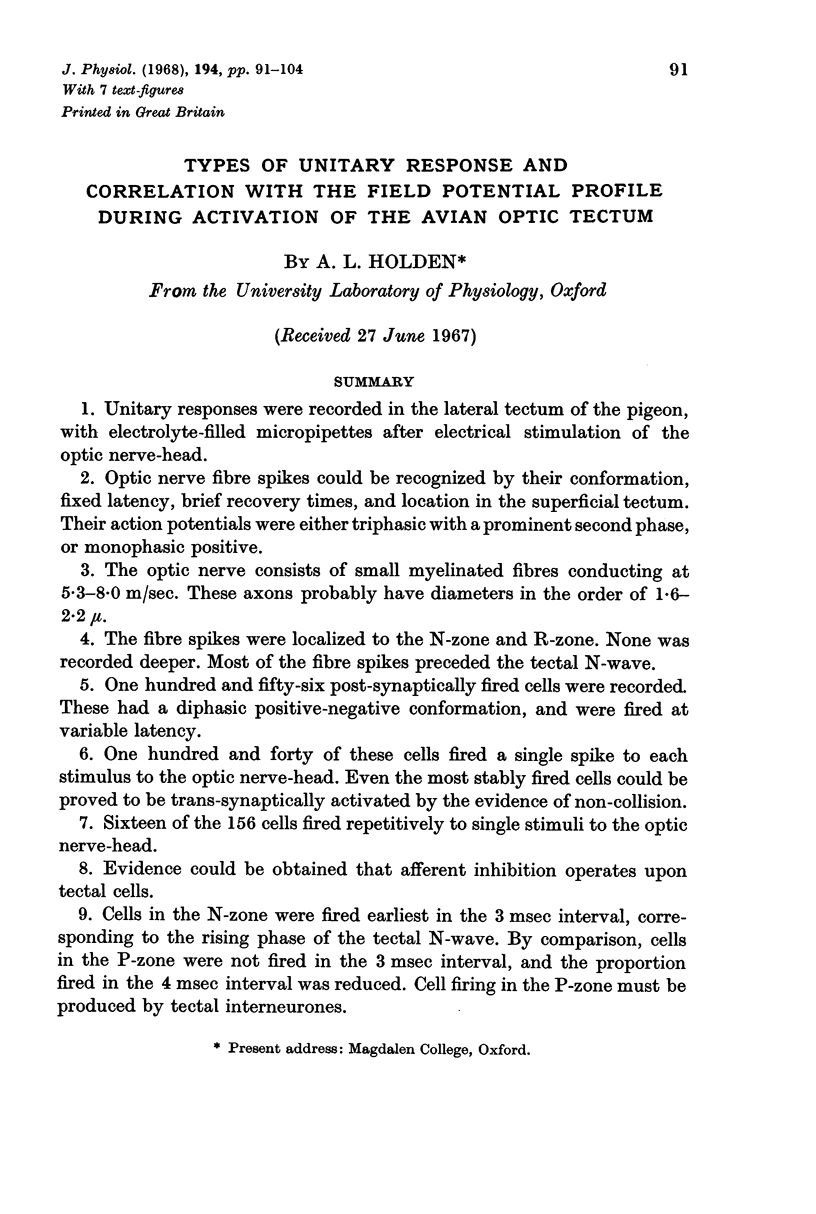
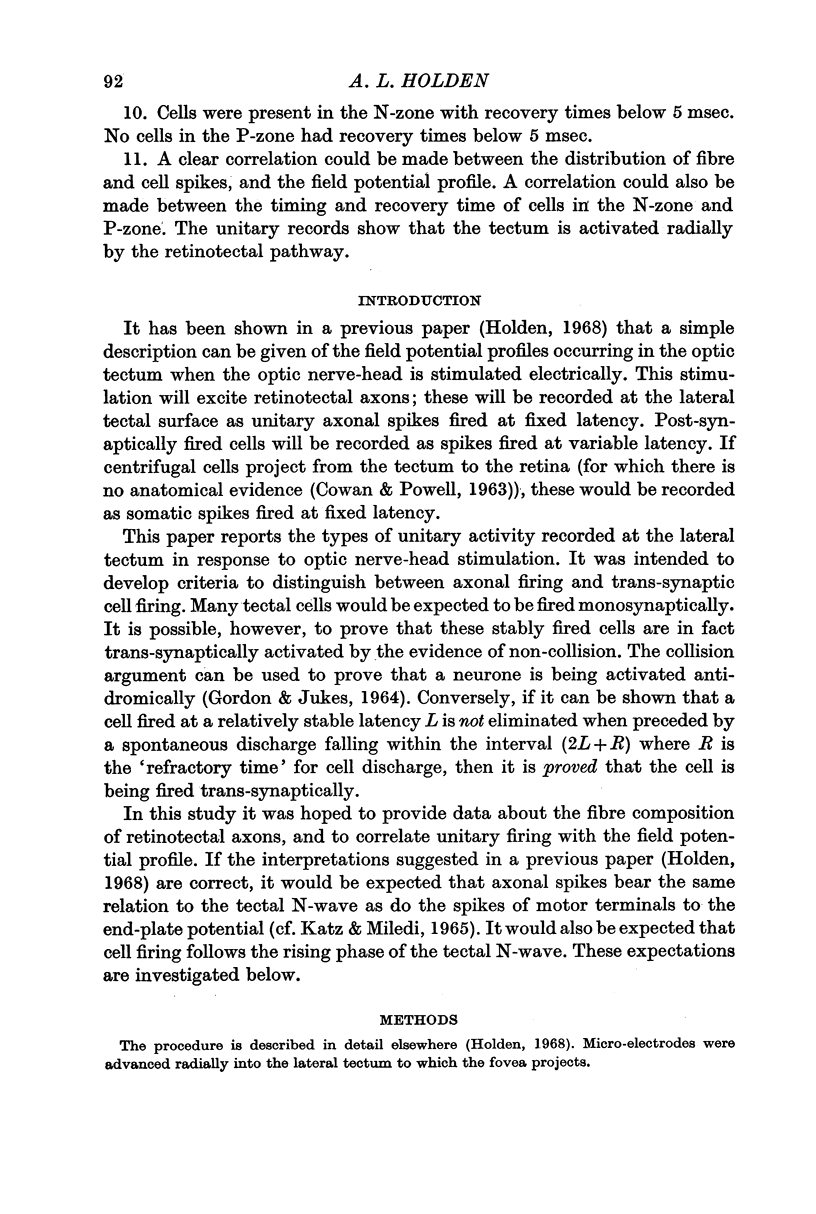
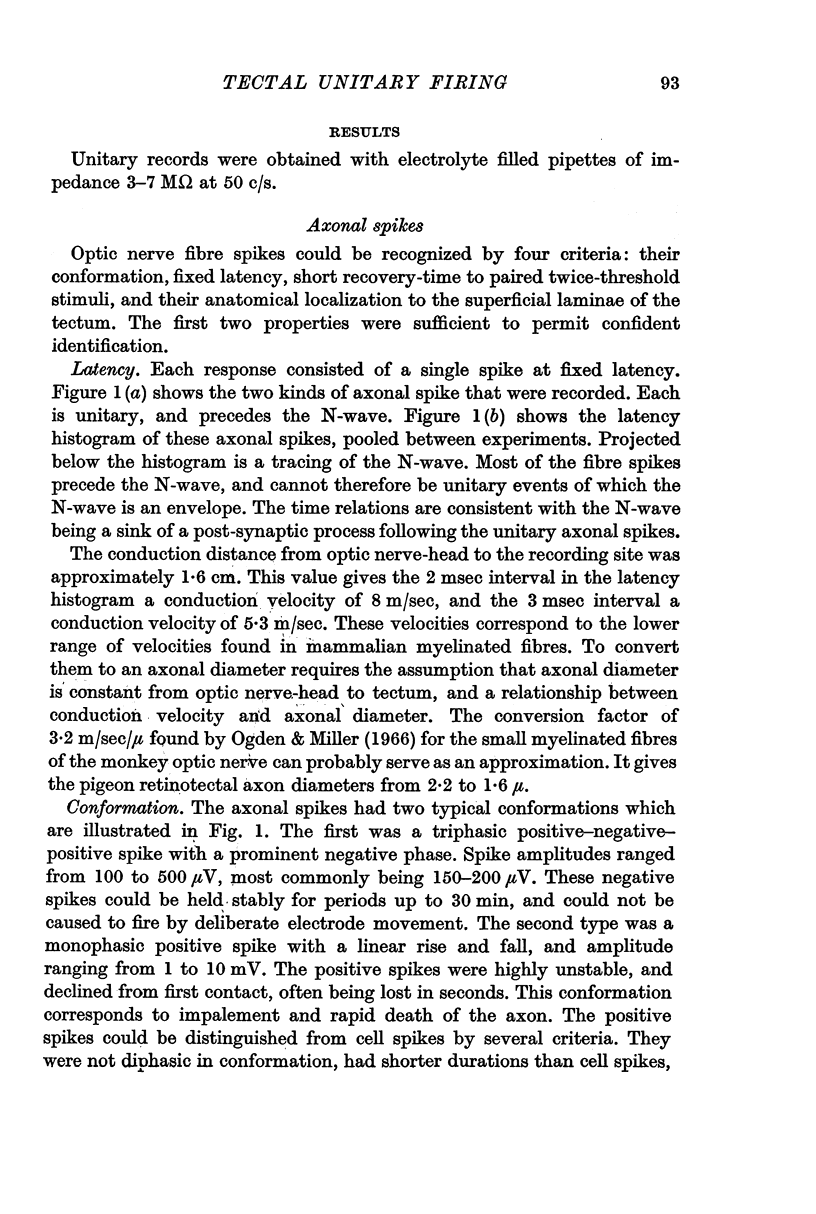

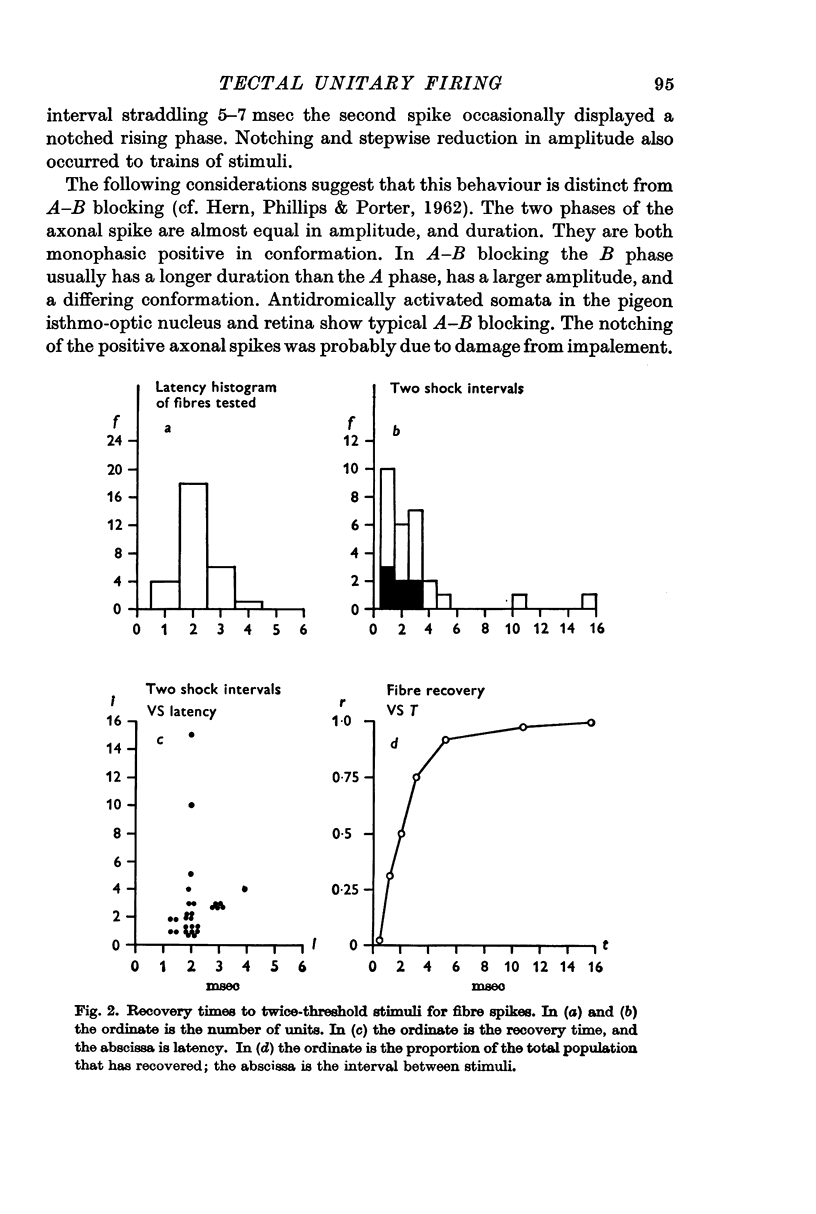
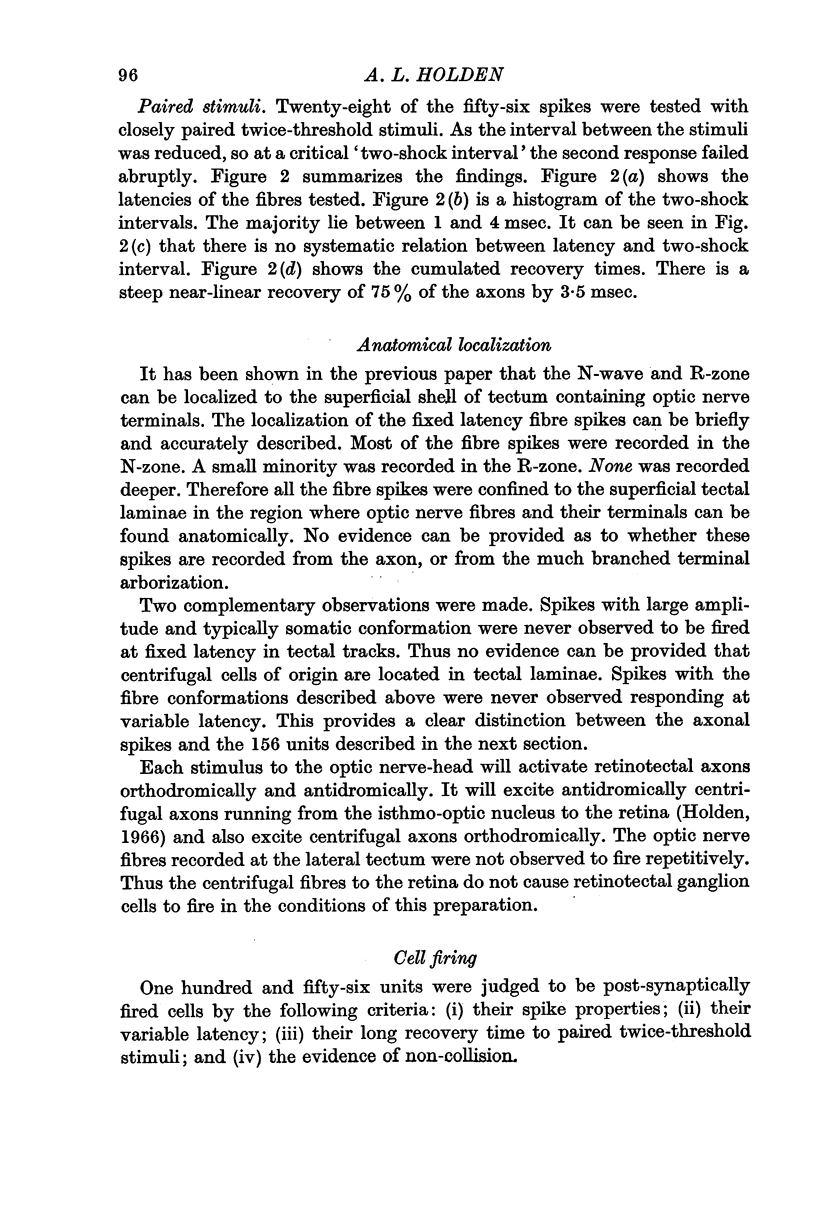
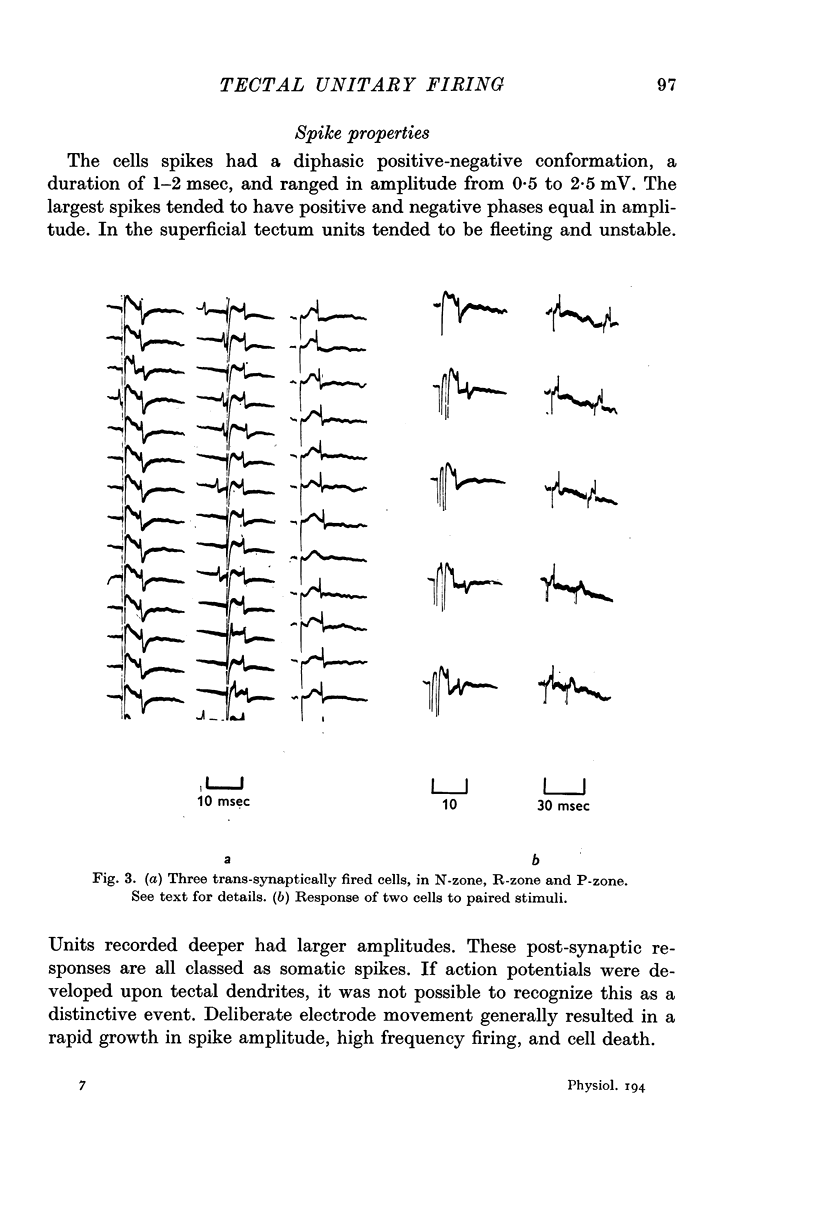
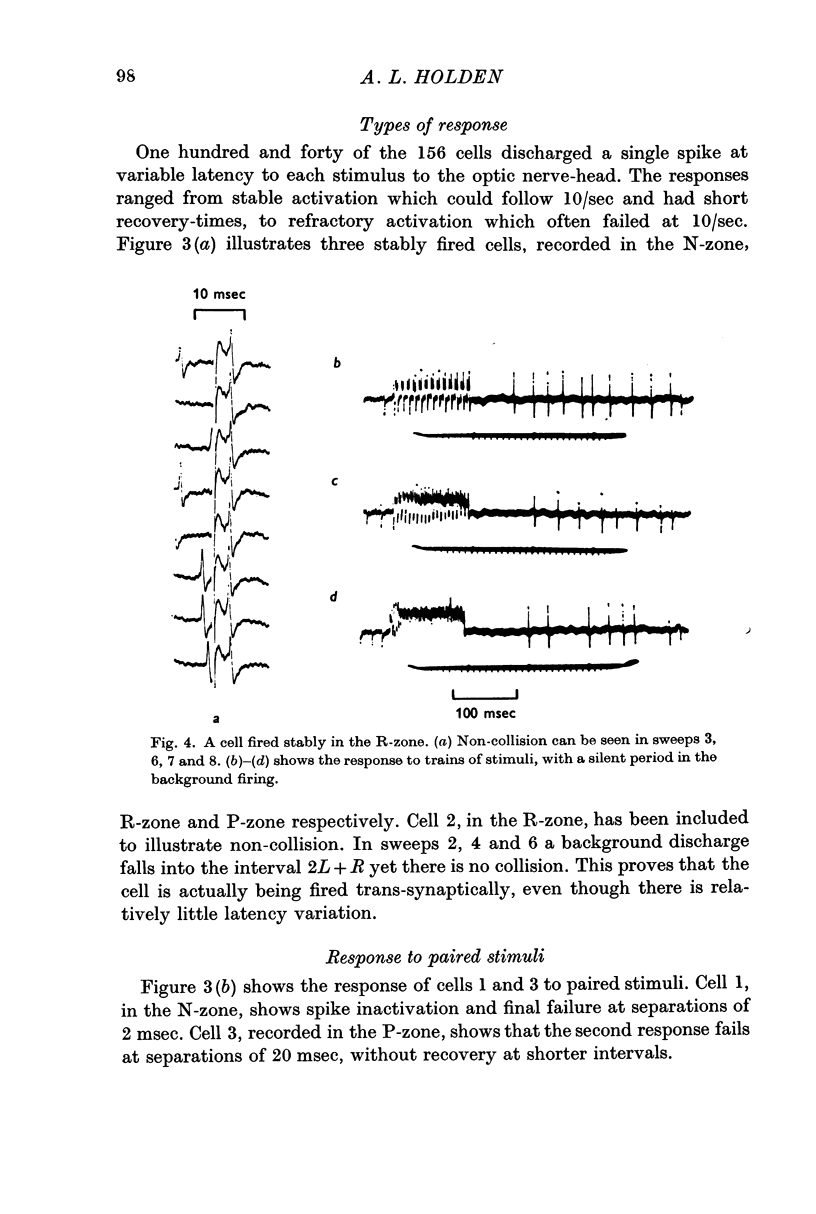
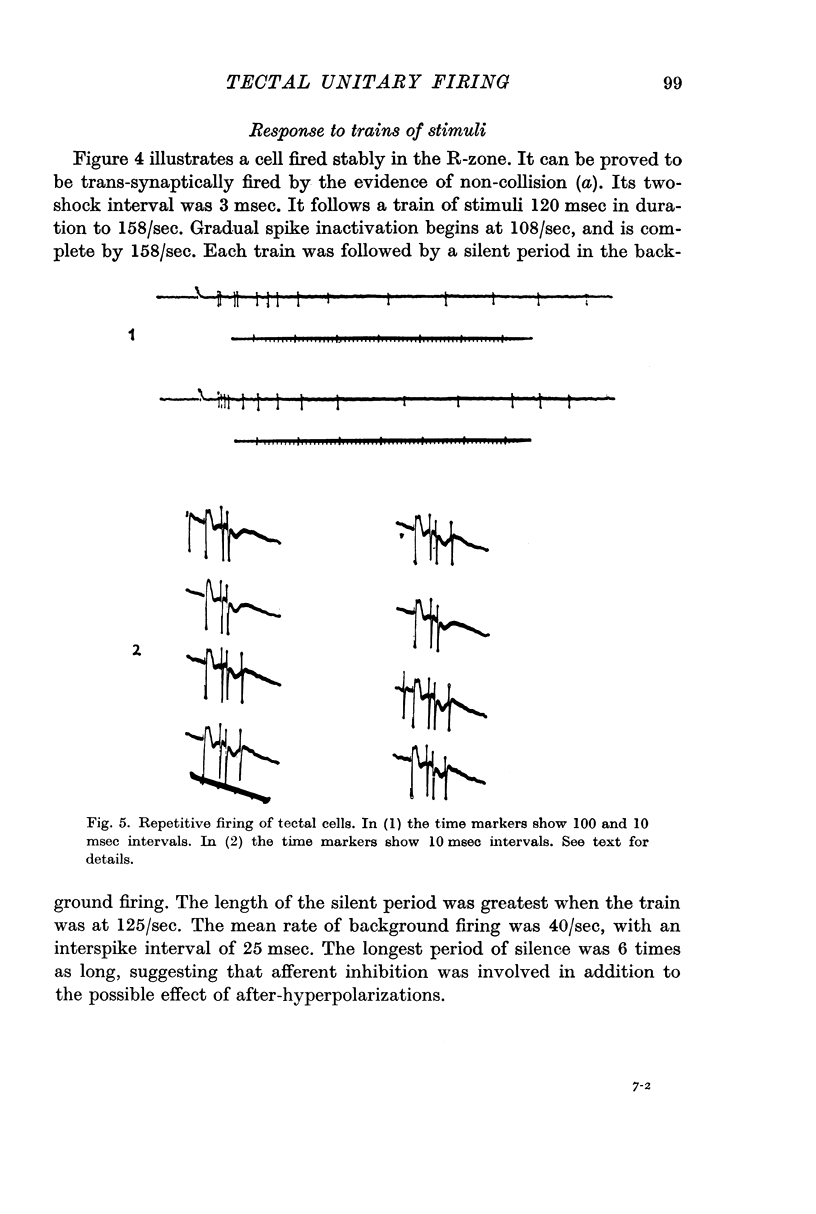
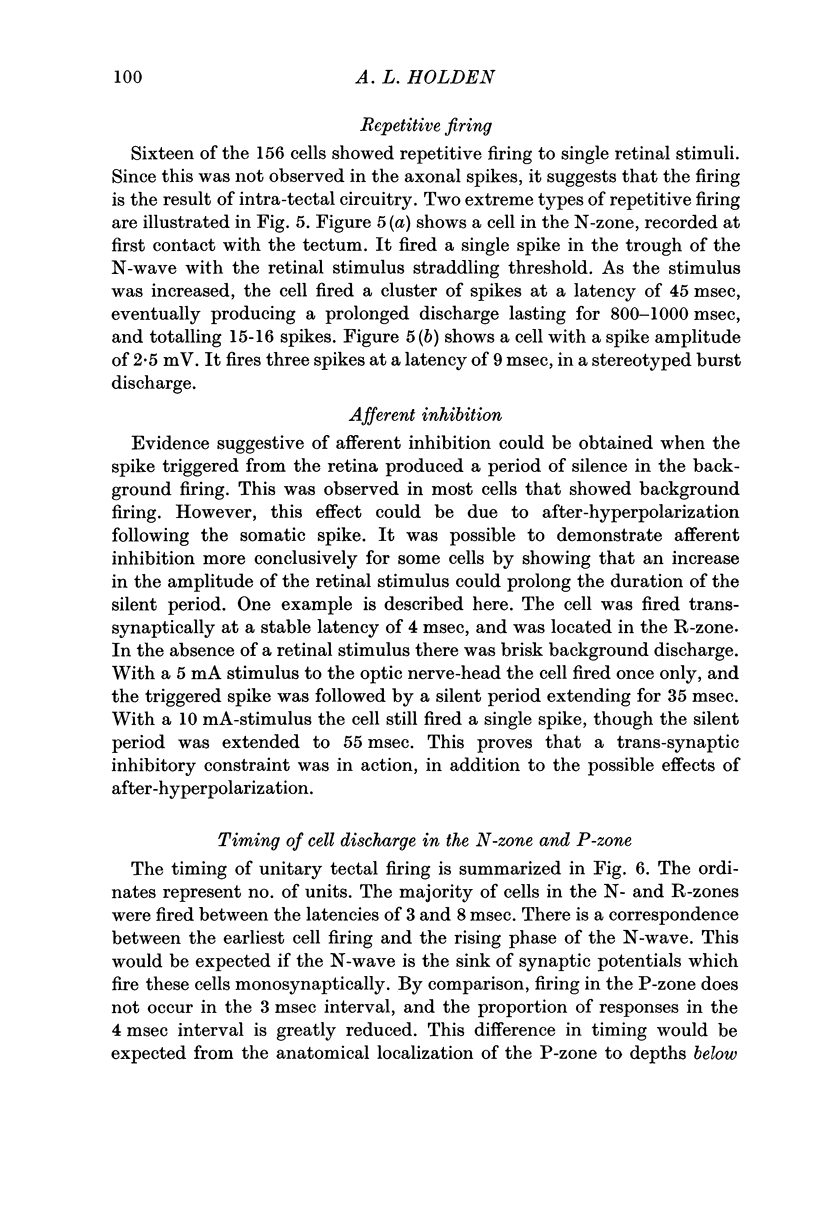
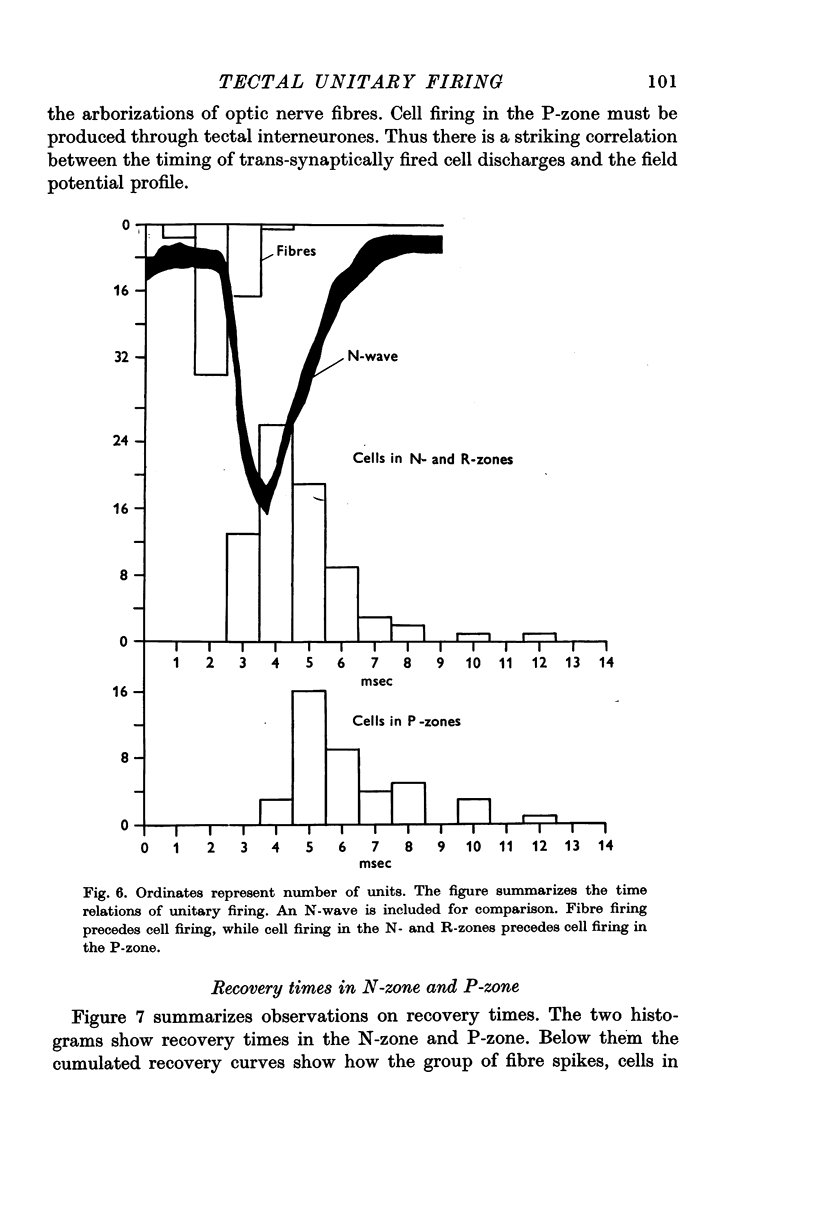
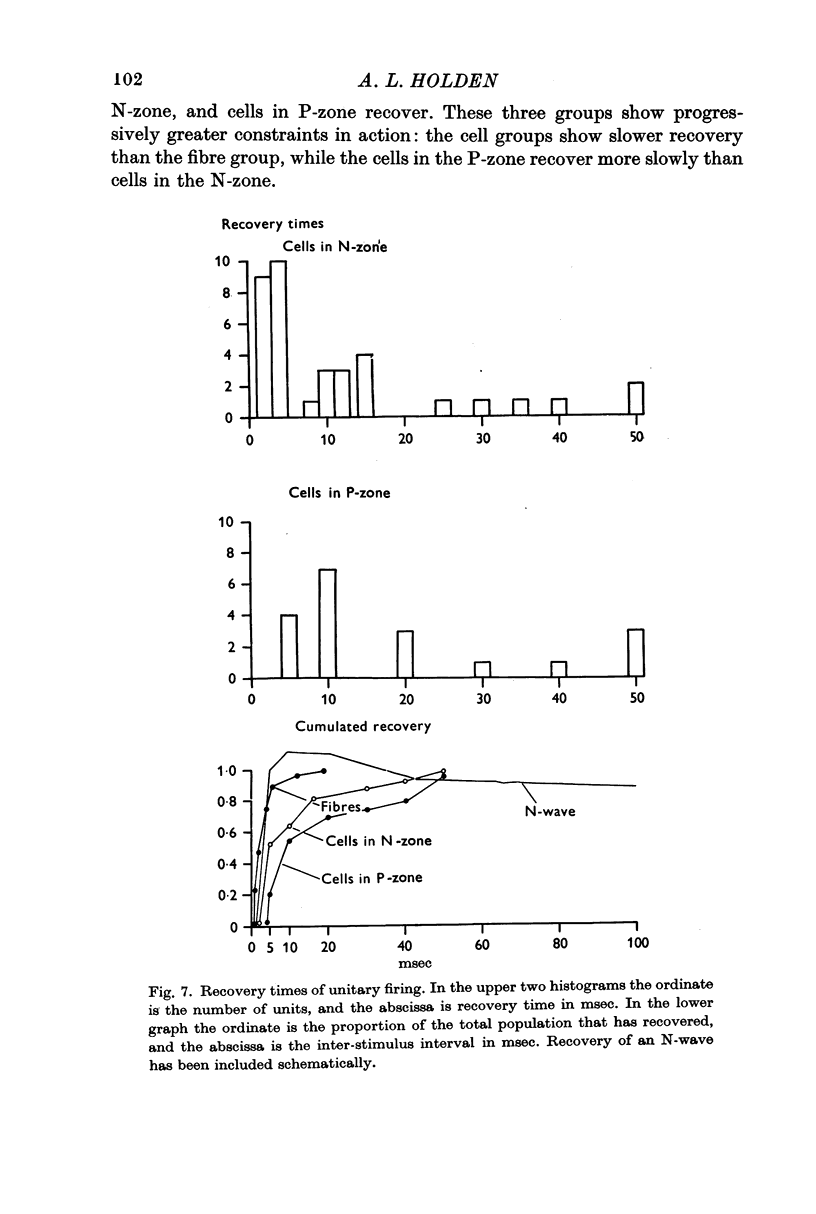
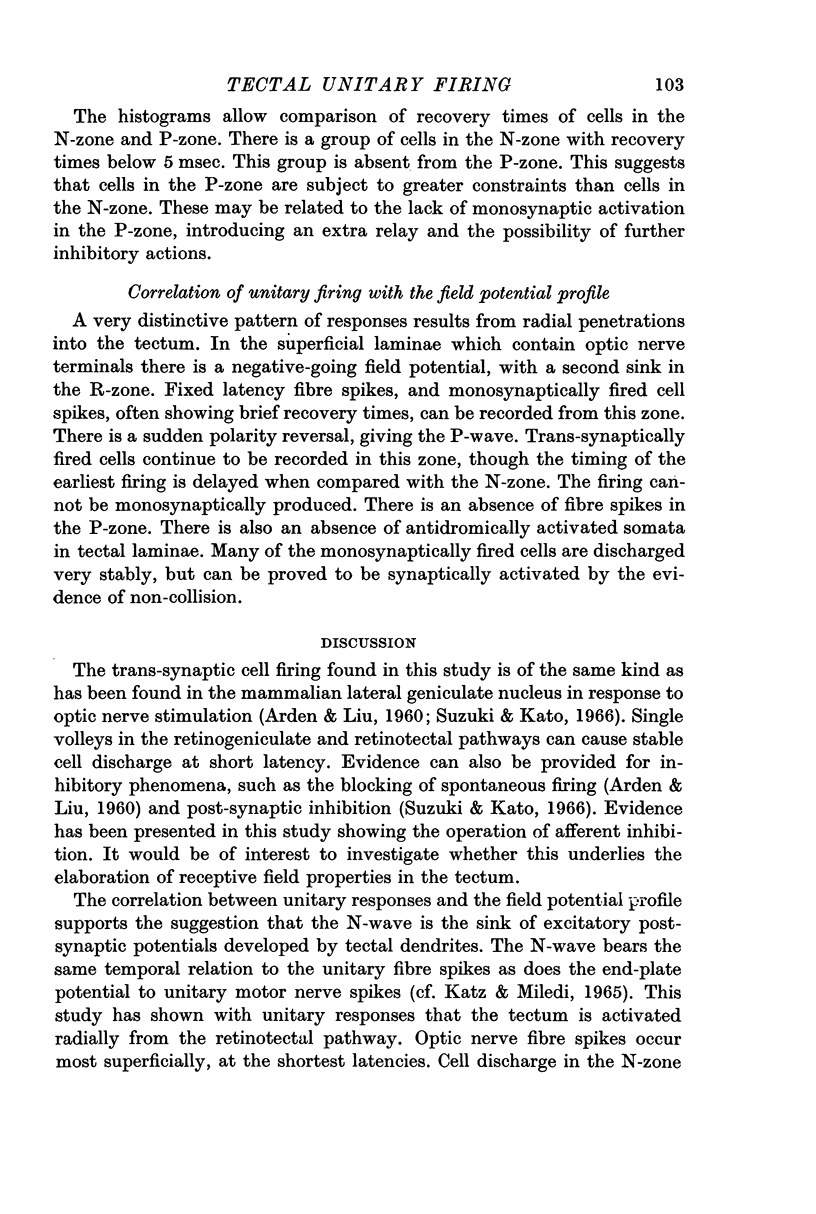
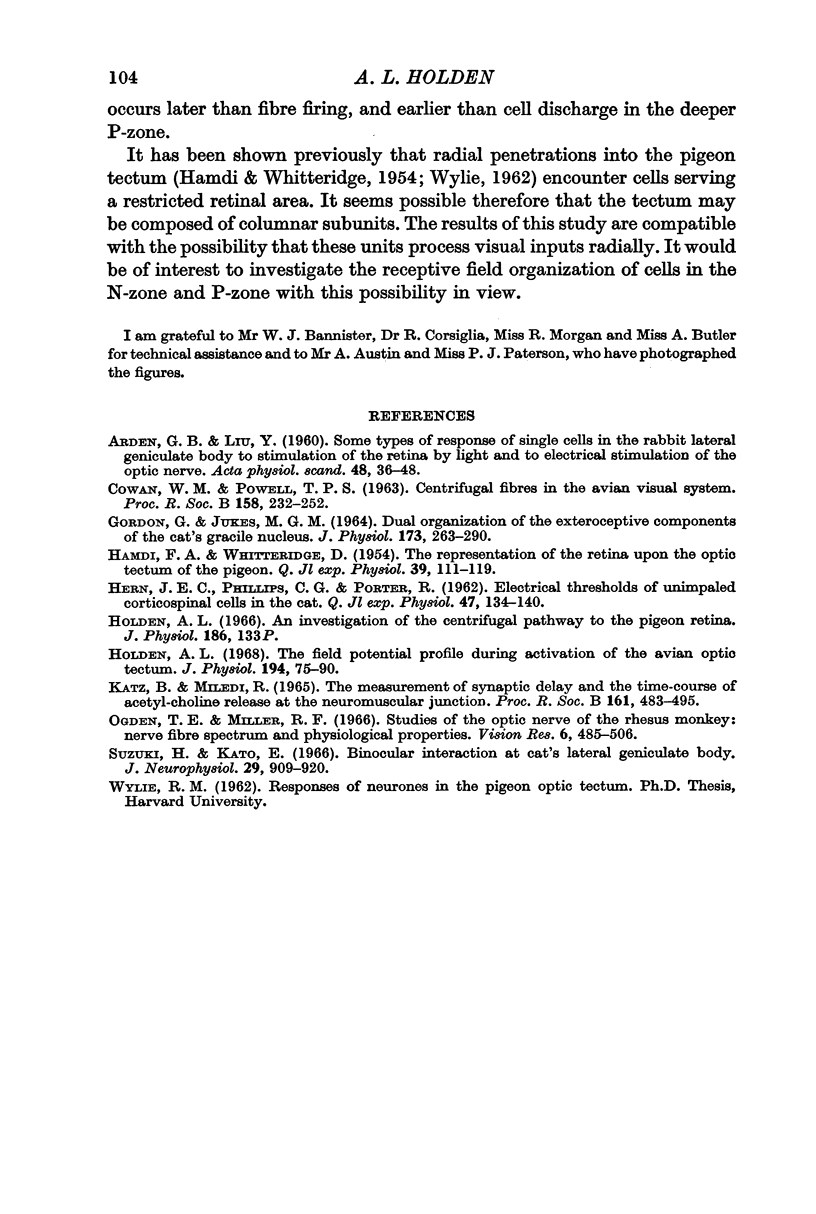
Selected References
These references are in PubMed. This may not be the complete list of references from this article.
- ARDEN G., LIU Y. M. Some types of response of single cells in the rabbit lateral geniculate body to stimulation of the retina by light and to electrical stimulation of the optic nerve. Acta Physiol Scand. 1960 Jan 30;48:36–48. doi: 10.1111/j.1748-1716.1960.tb01844.x. [DOI] [PubMed] [Google Scholar]
- COWAN W. M., POWELL T. P. CENTRIFUGAL FIBRES IN THE AVIAN VISUAL SYSTEM. Proc R Soc Lond B Biol Sci. 1963 Sep 17;158:232–252. doi: 10.1098/rspb.1963.0045. [DOI] [PubMed] [Google Scholar]
- GORDON G., JUKES M. G. DUAL ORGANIZATION OF THE EXTEROCEPTIVE COMPONENTS OF THE CAT'S GRACILE NUCLEUS. J Physiol. 1964 Sep;173:263–290. doi: 10.1113/jphysiol.1964.sp007456. [DOI] [PMC free article] [PubMed] [Google Scholar]
- HAMDI F. A., WHITTERIDGE D. The representation of the retina on the optic tectum of the pigeon. Q J Exp Physiol Cogn Med Sci. 1954;39(2):111–119. doi: 10.1113/expphysiol.1954.sp001053. [DOI] [PubMed] [Google Scholar]
- HERN J. E., PHILLIPS C. G., PORTER R. Electrical thresholds of unimpaled corticospinal cells in the cat. Q J Exp Physiol Cogn Med Sci. 1962 Apr;47:134–140. doi: 10.1113/expphysiol.1962.sp001584. [DOI] [PubMed] [Google Scholar]
- Holden A. L. The field potential profile during activation of the avian optic tectum. J Physiol. 1968 Jan;194(1):75–90. doi: 10.1113/jphysiol.1968.sp008395. [DOI] [PMC free article] [PubMed] [Google Scholar]
- KATZ B., MILEDI R. THE MEASUREMENT OF SYNAPTIC DELAY, AND THE TIME COURSE OF ACETYLCHOLINE RELEASE AT THE NEUROMUSCULAR JUNCTION. Proc R Soc Lond B Biol Sci. 1965 Feb 16;161:483–495. doi: 10.1098/rspb.1965.0016. [DOI] [PubMed] [Google Scholar]
- Ogden T. E., Miller R. F. Studies of the optic nerve of the rhesus monkey: nerve fiber spectrum and physiological properties. Vision Res. 1966 Oct;6(9):485–506. [PubMed] [Google Scholar]
- Suzuki H., Kato E. Binocular interaction at cat's lateral geniculate body. J Neurophysiol. 1966 Sep;29(5):909–920. doi: 10.1152/jn.1966.29.5.909. [DOI] [PubMed] [Google Scholar]


